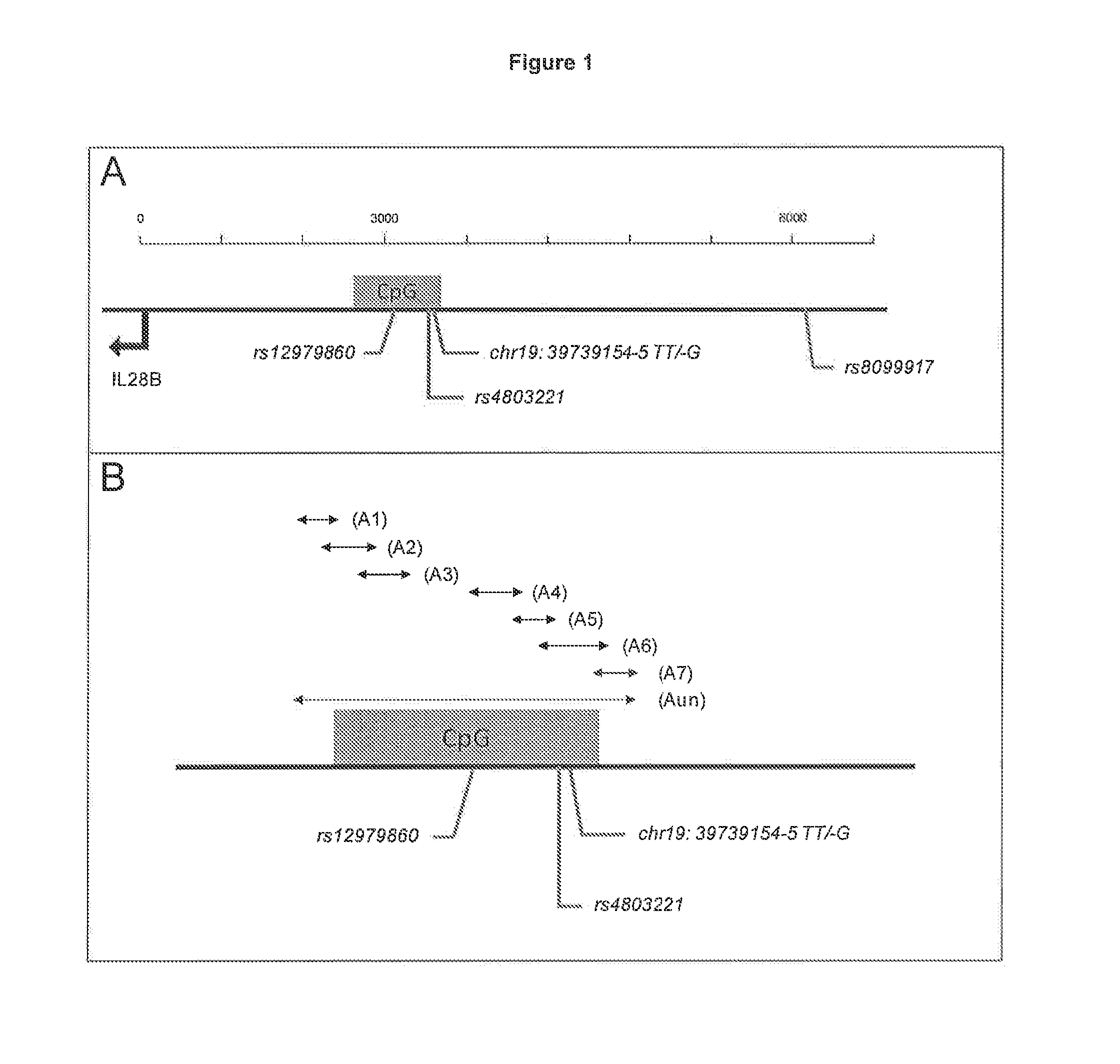Polymorphisms associated with non-response to a hepatitis c treatment or susceptibility to non-spontaneous hepatitis c clearance
- Summary
- Abstract
- Description
- Claims
- Application Information
AI Technical Summary
Benefits of technology
Problems solved by technology
Method used
Image
Examples
example 1
Patients and Methods
[0096]Patients were included from the Swiss Hepatitis C Cohort Study (SCCS), a multicenter study of >3700 HCV-infected patients enrolled at 8 major Swiss hospitals and their local affiliated centers since 2001. Details of patients' selection and data collection were described elsewhere {Prasad et al., 2007; Bochud et al., 2009}. Caucasian patients enrolled in the SCCS before Aug. 1, 2010, with available DNA and written consent for genetic studies were selected. The study included patients with spontaneous HCV clearance (defined as HCV seropositivity and undetectable HCV RNA without previous antiviral treatment) and those who had chronic infection with HCV genotypes 1, 2, 3 or 4 and were assessable for response to therapy with pegylated-interferon alpha and ribavirin, i.e. who received >80% of the recommended dose of each drug. Demographic characteristics including age, sex, HCV risk factors, HCV genotypes, alcohol consumption, markers of chronic infection with th...
example 2
Results
[0097]The profile of methylation in a CpG region located (˜2500 to ˜3500 bp upstream IL28B start codon, FIG. 1) was analyzed by bisulfite-sequencing in SCCS patients. Overall, the methylation profile in the CpG region was conserved. Only two loci revealed different methylation patterns (FIG. 2). In both cases, the methylation depended on polymorphisms in the native DNA sequence. The first locus was located ˜3500 bp upstream the IL28B start codon, where a C to G substitution, previously described as rs4803221, resulted in a loss of methylation. The second locus was located ˜3550 bp upstream IL28B start codon, where a T deletion (previously described as rs67272382 and rs67272383 followed by a T to G substitution (previously described as rs74597329) resulted in a gain of methylation. In all 34 sequenced patients, the deletion and substitution were always present or absent together, suggesting that rs67272382 and rs74597329 can be considered as a single polymorphism, called chr19...
PUM
| Property | Measurement | Unit |
|---|---|---|
| Antimicrobial properties | aaaaa | aaaaa |
| Linkage disequilibrium | aaaaa | aaaaa |
Abstract
Description
Claims
Application Information
 Login to View More
Login to View More - R&D
- Intellectual Property
- Life Sciences
- Materials
- Tech Scout
- Unparalleled Data Quality
- Higher Quality Content
- 60% Fewer Hallucinations
Browse by: Latest US Patents, China's latest patents, Technical Efficacy Thesaurus, Application Domain, Technology Topic, Popular Technical Reports.
© 2025 PatSnap. All rights reserved.Legal|Privacy policy|Modern Slavery Act Transparency Statement|Sitemap|About US| Contact US: help@patsnap.com


